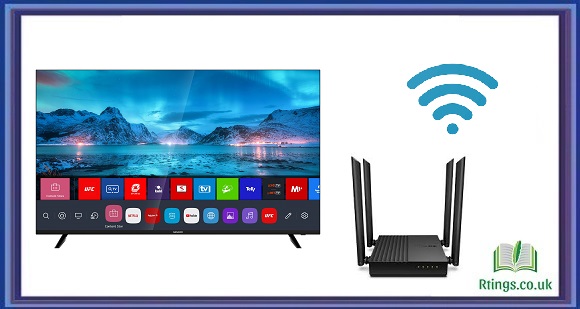In recent years, the television industry has seen a surge in innovation and technology, with curved TVs emerging as one of the prominent trends. With their gracefully curved screens, these televisions promise a more immersive and captivating viewing experience. However, the question remains: Are curved TVs better than their flat counterparts, or are they a design gimmick? In this comprehensive analysis, we will explore the advantages and disadvantages of curved TVs, shedding light on whether they truly provide a superior viewing experience.
Before deciding whether curved TVs are better, let’s understand what they are and the reasons behind their introduction.
What Are Curved TVs?
Curved TVs are television sets with screens that are slightly curved inwards. This curvature is designed to mimic the curvature of the human eye, offering a more immersive and cinematic viewing experience.
The Evolution of Curved TVs
Curved TVs first appeared in the consumer market in the early 2010s. Manufacturers marketed them as a ground-breaking technology that could revolutionize home entertainment. The idea was to provide viewers with a more natural and enveloping viewing experience by curving the screen.
The Advantages of Curved TVs
Proponents of curved TVs argue that they offer several advantages over their flat counterparts. Let’s examine these purported benefits:
Enhanced Immersion
The primary selling point of curved TVs is their ability to create a more immersive viewing experience. The curve is designed to match the curvature of the human field of vision, allowing viewers to feel surrounded by the content. This can be particularly appealing when watching movies or sports, as it creates a sense of being in the action.
Reduced Reflections
Curved screens can help reduce the impact of ambient light and reflections. When watching in well-lit rooms or windows, the curved design can direct reflections away from the viewer, potentially improving image quality.
Wider Viewing Angles
Some curved TVs claim to offer wider viewing angles compared to flat screens. This means that viewers sitting off-centre can still enjoy a clear, immersive experience without significantly losing picture quality.
Aesthetics
Curved TVs are often considered aesthetically pleasing. Their sleek and modern design can be a focal point in a room and add a touch of elegance to the overall decor.
The Disadvantages of Curved TVs
While there are advantages to curved TVs, they also come with their fair share of disadvantages. It’s essential to consider both sides of the argument to make an informed decision.
Limited Seating Position
One of the significant drawbacks of curved TVs is that they require viewers to sit directly in front of the screen to appreciate the curvature fully. The immersive effect is only possible if you’re seated at the right angle, and the picture can appear distorted.
Screen Glare and Reflections
While curved screens may help reduce reflections in some cases, they can exacerbate glare and reflections in other situations. The curvature can bounce light from various angles, causing distractions and reducing image clarity.
Limited Compatibility
Curved TVs may not be compatible with certain wall mounts or TV stands designed for flat screens. This can limit your placement options and add to the cost if you need to purchase specific accessories.
Cost
Curved TVs tend to be more expensive than their flat counterparts with similar specifications. This cost premium may not be justified for some viewers, especially considering potential disadvantages.
Distortion at Extreme Angles
When viewing content from extreme angles, such as when lying down or sitting on the floor, curved screens can distort the image. This can be a significant drawback for households with varied seating arrangements.
The Impact on Picture Quality
Picture quality is a critical factor in evaluating the superiority of curved TVs. Let’s examine how curved screens may affect picture quality:
Resolution and Size
The curvature of a TV screen is more noticeable on larger displays. Smaller curved TVs may not provide the same level of immersion as larger ones. Additionally, for a truly immersive experience, 4K resolution or higher is often recommended.
Distortion and Color Accuracy
Curved screens can introduce distortion, especially when viewing from off-centre positions. This distortion can affect color accuracy and make some screen parts appear stretched or compressed.
Motion Artifacts
Curved screens can sometimes exhibit motion artefacts, such as judder or motion blur. These issues can be more pronounced on curved displays due to how the screen’s curvature affects motion.
Is Curvature Necessary for 3D Viewing?
Some manufacturers previously marketed curved screens as essential for 3D Viewing. However, the adoption of 3D technology has significantly declined in recent years. Most new curved or flat TVs no longer support 3D content. Therefore, the argument for curvature in relation to 3D Viewing is no longer relevant for most consumers.
The Future of Curved TVs
The popularity of curved TVs has waned in recent years, with most manufacturers focusing on flat-screen models. This shift in the market raises questions about the future of curved TVs.
Market Trends
Major television manufacturers have reduced their production of curved TVs in response to changing consumer preferences. The market has clearly preferred flat screens due to their versatility and wider appeal.
Niche Appeal
Curved TVs may still have a niche appeal for those who prioritize a unique and immersive viewing experience. However, it’s essential to consider whether the benefits justify the higher cost and potential drawbacks.
Alternatives to Curved TVs
If you’re seeking an immersive viewing experience without the drawbacks of curved TVs, there are alternative options to consider:
OLED and QLED TVs
OLED and QLED TVs offer excellent picture quality and wide viewing angles without a curved screen. These technologies provide vibrant colors, deep blacks, and high contrast ratios.
Larger Flat Screens
A large, high-resolution, flat-screen TV can provide an immersive viewing experience without curved TV distortion or limited seating positions.
Home Theater Systems
Investing in a quality home theatre system with a large screen and surround sound can create an immersive viewing experience that rivals or surpasses the effects of a curved screen.
Making an Informed Decision
Ultimately, deciding whether a curved TV is better for you depends on your preferences and viewing habits. Here are some key considerations to help you make an informed decision:
Viewing Environment
Consider the lighting conditions and seating arrangement in your viewing environment. If you have control over these factors, you can optimize the viewing experience.
Screen Size and Resolution
For a truly immersive experience, opt for a larger screen with high resolution (4K or higher). This will significantly impact immersion more than the screen’s curvature.
Personal Preference
Some individuals may find curved TVs visually appealing and enjoy the perceived immersion, while others may prefer the versatility and simplicity of flat screens.
Budget
Curved TVs tend to be more expensive than flat-screen models with similar specifications. Consider whether the potential benefits justify the higher cost.
Conclusion
In conclusion, whether curved TVs are better depends on individual preferences and priorities. While curved TVs can offer an immersive viewing experience with certain advantages, they also come with notable drawbacks and limitations. The television market has shifted towards flat screens in recent years, reflecting changing consumer preferences.
When considering a TV purchase, weighing the pros and cons of curved screens against your specific needs and viewing environment is crucial. Additionally, exploring alternative technologies, such as OLED and QLED displays or investing in a larger flat-screen TV can provide an immersive viewing experience without the potential drawbacks of curvature.
Ultimately, the choice between curved and flat TVs should align with your personal preferences and priorities in home entertainment.






